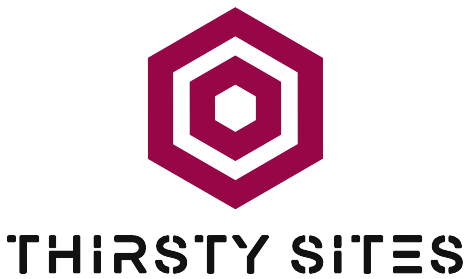Introduction
In the digital world, where countless websites compete for users’ attention, a compelling Call to Action (CTA) can be the deciding factor that transforms visitors into engaged users, customers, or subscribers. A well-designed CTA guides your audience toward the next step, whether it’s making a purchase, signing up for a newsletter, or downloading a resource. In this comprehensive guide, we’ll explore effective strategies to craft powerful CTAs that drive results and enhance the overall user experience.
Understanding the Importance of a Strong Call to Action
Your website or content may be rich with valuable information, but without a clear CTA, visitors might leave without taking any meaningful action. A strong CTA acts as a bridge between your content and your business goals. It:
- Engages users and encourages interaction
- Helps measure campaign or content effectiveness
- Boosts conversion rates significantly
- Creates a sense of urgency or importance
By mastering the art of effective CTAs, you ensure that every visitor has a clear understanding of what to do next, increasing the likelihood that they’ll follow through.
Key Elements of a Powerful Call to Action
1. Clarity and Specificity
Your CTA should be straightforward and unambiguous. Use concise language that clearly states what you want the user to do. Instead of vague phrases like “Click here,” opt for specific instructions such as “Download Your Free E-Book” or “Subscribe to Our Newsletter”.
2. Action-Oriented Language
Use strong verbs that inspire action. Words like “Buy,” “Register,” “Download,” “Join,” “Get,” or “Discover” provoke immediate responses. Action-oriented language leaves no doubt about what the user should do next.
3. Urgency and Scarcity
Create a sense of urgency to motivate immediate action. Phrases like “Limited Time Offer,” “Register Now,” “Only a Few Slots Left,” or “Get It Before It’s Gone” encourage visitors to act quickly rather than delaying.
4. Visual Contrast and Placement
A successful CTA needs to stand out visually from the surrounding content. Use contrasting colors, whitespace, and strategic placement to draw attention. Typically, placing the CTA above the fold or near relevant content increases visibility and click-through rates.
5. Personalization and Relevance
Tailor your CTA to match the needs and interests of your audience. Personalized CTAs—such as “Find Your Perfect Laptop” or “Start Your Fitness Journey Today”—make users feel understood and increase engagement.
6. Mobile Optimization
With more users browsing on smartphones, ensure your CTAs are mobile-friendly. Buttons should be large enough to tap easily, and placement should consider thumb reach and readability.
Strategies for Creating Effective Calls to Action
Use Action Verbs
Start your CTA with compelling action verbs to inspire immediate responses. For instance, “Download,” “Join,” “Start,” “Discover,” or “Register” are powerful starters. They clearly tell users what to do and ignite a sense of purpose.
Keep It Short and Focused
A concise CTA prevents confusion and eliminates distraction. Aim for a phrase that is brief yet informative, ideally under 10 words. For example, “Get Your Free Quote Now” or “Subscribe & Stay Updated.”
Highlight Benefits
Show users what they will gain by taking action. Incorporate benefit-oriented language in your CTA, like “Save Money Today,” “Improve Your Skills,” or “Receive Exclusive Access.”
Use Visual Cues
Design your CTA with eye-catching colors, bold fonts, and buttons that look clickable. Use whitespace around your CTA to prevent clutter and focus attention.
Implement Social Proof
Adding testimonials, reviews, or trust badges near your CTA can increase credibility and persuade users to act. For instance, “Join 10,000 Happy Customers” reinforces trust.
A/B Testing Your CTAs
Experiment with different wording, colors, placements, and sizes to determine what works best for your audience. Use analytics tools to analyze click-through rates and conversion data, refining your CTAs over time for maximum effectiveness.
Common Mistakes to Avoid When Crafting CTAs
- Being Vague: Avoid unclear language; your CTA should leave no doubt about the desired action.
- Overloading with Too Many CTAs: Too many options can confuse users; focus on one primary CTA per page or section.
- Ignoring Mobile Users: Failing to optimize for mobile can significantly reduce clicks.
- Using Generic Phrases: Don’t settle for dull or common phrases; be creative and engaging.
Integrating CTAs Seamlessly into Your Content
Effective CTAs are not just standalone buttons; they should be integrated into your content naturally. For example:
- Place CTAs at logical stopping points in your articles or videos.
- Use your CTA to complement your message, not interrupt it.
- Ensure that the surrounding content prepares the visitor to take the action.
By creating a cohesive flow, your CTAs will stand out and be more persuasive.
Conclusion
Crafting powerful calls to action is both an art and a science. The key lies in clarity, urgency, visual appeal, and relevance. When done correctly, your CTAs can dramatically increase user engagement, conversions, and ultimately, your business success. Remember to test, analyze, and refine your approach continuously. By investing time and thought into your CTAs, you set the stage for long-term growth and meaningful user interactions.
Final Thoughts
Every piece of content you create provides an opportunity to guide your audience toward a desired action. Whether you’re seeking newsletter signups, product sales, or resource downloads, your CTAs are the catalysts for achieving these goals. Embrace a strategic mindset, stay creative, and always prioritize the user experience to craft CTAs that truly convert.

